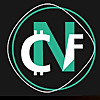ARTICLE AD BOX

Ever heard of Tether’s USDT? It’s a heavy hitter in the crypto scene. Folks love it for being steady like a rock. Let’s see why it’s such a big deal and why it’s so important to have USDT wallet lock and loaded for everydays transactions.
Market Capitalization
Tether’s USDT is no small fry—it’s the third-biggest cryptocurrency out there, sitting pretty with a market cap close to $120 billion. That’s no chump change! Basically, it’s the go-to digital dollar for traders all over, whether they’re in bustling markets or chillin’ on their couch trading crypto.
Stability in Developing Economies
USDT has been a bit of a superhero in places like Argentina and Turkey. When local currencies go on some wild rides—up, down, and all around—people turn to USDT to keep their money safe. Using it helps them dodge the local currency rollercoaster and hang on to their wealth.
Everyday folks latch onto USDT to buy, sell, and save without the headache of dealing with their shaky economies. It’s a lifesaver that keeps their cash from vanishing faster than their morning coffee.
Issuance and Blockchain Allocation
Tether’s USDT bounces around on different blockchain playgrounds, mainly hanging out on the Tron and Ethereum networks. Each of these platforms has its little perks that make them ideal for different kinds of crypto shenanigans and trading fun.
Tron Blockchain
Tron is like USDT’s favorite hangout spot—over half of USDT’s stash, around $61 billion, is chilling here. Why? Tron is known for being super cheap when you’re making lots of trades. It’s like the budget-friendly choice for folks who don’t want to burn their wallets on hefty transaction fees.
| Blockchain | USDT Issuance (in billions) | Transaction Cost (USD) |
| Tron | 61 | 0.20 |
| Ethereum | 54.3 | 14.60 |
Ethereum Allocation
Now, Ethereum also plays a big part, with about $54.3 billion worth of USDT strutting its stuff on this network. Ethereum feels like home for those who are into complex decentralized finance (DeFi) stuff. It’s got the muscle for all kinds of fancy financial tricks. But, it charges more for transactions, enough to make some folks think twice before cracking on with frequent trades.
| Blockchain | USDT Issuance (in billions) | Transaction Cost (USD) |
| Tron | 61 | 0.20 |
| Ethereum | 54.3 | 14.60 |
By mixing up USDT’s distribution between these networks, Tether makes sure everybody’s got a spot to play in the crypto sandbox, whether they like it cheap, fast, or full of financial wizardry.
Tether’s Reserves and Liquidity
Tether’s got its ducks in a row when it comes to juggling reserves and liquidity. This helps its USDT stablecoin hold steady in the wild ride that is the crypto market. How do they pull this off? By smartly placing their bets, mostly on US Treasury bills, and keeping a close eye on the books.
US Treasury Bills
Tether didn’t just stroll onto Wall Street—they’ve gobbled up over $100 billion in U.S. Treasury bills. This hefty stash gives USDT holders some peace of mind and a bit of stability. Having such a large chunk of Uncle Sam’s IOUs means Tether is rubbing shoulders with the big players, as big as economic powerhouses like Germany and South Korea.
| What’s What | How Much? |
| U.S. Treasury Bills | $100 billion |
| Big Player Like | Germany |
| Big Player Like | South Korea |
Thanks to these T-bills, you can count on Tether if you need to trade your USDT back to dollars pronto. As China steps back from U.S. debt, Tether is stepping up, solidifying its market stance.
Financial Oversight
Tether plays it smart by teaming up with Cantor Fitzgerald, those financial whizzes known for handling ridiculous amounts of cash. Plus, Tether’s finances get a regular once-over by a big accounting firm, so everything’s on the up and up.
Here’s what’s on Tether’s checklist:
- Routine Checks: An ace accounting firm verifies those reserve stats regularly.
- Pros in Charge: Cantor Fitzgerald provides the financial savvy needed for running the show.
There’s chatter about Tether’s reserves floating around, but the CEO has no time for it, waving off skeptics with more transparency than your grandma’s crystal punch bowl. They’re all about proving USDT’s rock-solid backing, winning over the crypto crowd’s trust one dollar at a time.
Comparison with Circle’s US Dollar Coin (USDC)
Partnership Expansion
Circle’s teamed up with MHC Digital Group to spread the word about its US Dollar Coin (USDC) far and wide. The plan? Win over institutional investors in places like Australia and the Asia-Pacific region. By doing so, USDC aims to be the wallet-friendly choice for affluent folks, hedge funds, and crypto-savvy businesses. This clever move could boost USDC’s popularity and beef up its standing in the crowd, giving rival Tether’s USDT a run for its money. It’s’ pretty good addition to all crypto enthusiasts and USDT is a great alternative for your Solana wallet.
Market Cap Analysis
Looking at the numbers game between USDT and USDC shows a big gap in their market weight. Tether’s USDT is flexing its muscles with a market cap that’s nearly at $120 billion, making it the third biggest name in the crypto scene, coming in just after Bitcoin and Ethereum. USDC, meanwhile, trails behind with about $35.6 billion. This hefty difference underscores USDT’s lead, pointing to people’s trust in its steadiness and usefulness in the crypto market.
| Stablecoin | Market Capitalization |
| Tether (USDT) | $120 billion |
| Circle (USDC) | $35.6 billion |
Checking out these angles—who’s teaming up with who and the size of their financial pie—can give folks a better grasp of how Tether’s USDT and Circle’s USDC measure up against each other.
.png)
 1 month ago
3
1 month ago
3








 English (US)
English (US)